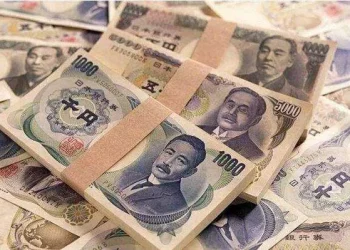Retirees and savers in Australia are being warned to prepare for lower income returns as the Reserve Bank of Australia (RBA) is expected to cut interest rates next week for the first time in over a year. While this will offer some financial relief to mortgage holders, it could deal a blow to those relying on interest income from their savings.
Australians currently hold a staggering $1.571 trillion in household deposits, according to the latest data from the Australian Prudential Regulation Authority (APRA). Should the RBA proceed with an interest rate cut, savers are likely to see a reduction in returns, as banks are expected to lower rates on both savings accounts and loans.
Major banks have already begun adjusting their savings rates in anticipation of a rate cut. National Australia Bank (NAB) and Commonwealth Bank have reduced their term deposit interest rates this week by as much as 0.20% and 0.15%, respectively.
Ron Hodge, CEO of InvestSMART Group, noted that while lower rates could provide a “financial lifeline” for mortgage holders, they could be “limiting” for retirees and savers who rely on cash deposits for regular income. “This includes the 32% of Australian homeowners who don’t have a mortgage and the 4.2 million retirees,” he said.
Hodge warned that, as during the pandemic when the RBA slashed rates dramatically, retirees and savers may be forced to take on more risk to maintain the same returns. “The hunt for higher returns may see retirees and savers turn to riskier assets that could be outside their comfort zone or ill-suited to their cash needs,” he added.
Currently, the highest interest savings account on offer is 5.60% from Rabobank, applicable for the first four months, while ongoing rates of 5.50% are available from ING, Ubank, MOVE, and BOQ, subject to conditions. For term deposits, Heartland Bank offers a 9-month term at 5.05%, while Family First Bank has a special 12-month term deposit at the same rate. Judo Bank leads on longer terms, offering rates of 4.70% for two years, 4.60% for three years, and 4.50% for terms of four or five years.
Can Savers Outpace Rate Cuts?
With interest rates likely to decline, many savers are hoping to secure similar returns. InvestSMART advises a “steady, structured process” for adjusting investment strategies as rates drop. One such recommendation is shifting part of term deposit funds into high-quality, low-cost diversified exchange-traded funds (ETFs).
A typical conservative ETF portfolio, combining 70% cash and bonds with 30% property and equities, returned around 7% in the past year, with 3.4% of that in income for investors. Hodge suggests this type of portfolio could be an ideal solution for deposit-reliant investors, offering steady returns with minimal risk in the context of a potential rate-cutting cycle.
Hodge emphasized that savers could adjust their asset allocations to suit their financial stage and the broader economic environment, making it easier to weather changing interest rate cycles.
RBA’s February Decision: Likely Rate Cut
The RBA board is set to meet on February 17 and 18 to decide whether to cut, increase, or hold the cash rate. The decision will be announced at 2:30 pm on February 18. Many economists, including those from the Big Four banks, predict the RBA will reduce the cash rate by 0.25%, bringing it down to 4.10%.
This move follows the latest inflation data, which showed easing price pressures. Headline inflation for the December quarter was 0.2%, with an annual increase of 2.4%. Underlying inflation, the RBA’s preferred measure, slowed to 0.5% for the quarter and 3.2% annually, the lowest in three years.
If the RBA cuts the cash rate by 0.25% and banks pass on the full reduction, borrowers with a $750,000 home loan could see monthly repayments decrease by around $115.
Related Topics:

























